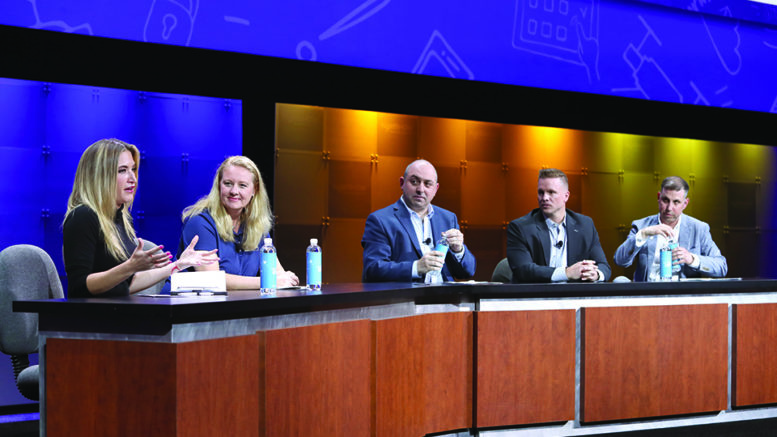Feeding The Superfan
LAS VEGAS—Sports fans often want near-24/7 access to the stars, stats and scores of their favorite teams. In today’s live sports world, technology has pretty much caught up to the superfan’s appetite for content anywhere, on any device.

In the session “Beyond the Field: How Sports Pioneers are Powering the 360 Audience Experience in the Cloud,” acclaimed sports stats expert and journalist Cynthia Frelund moderated a fast-paced panel discussion about how the cloud is being used to enable a modern workflow that allows organizations to provide a modern experience for fans.
The panel featured Stephanie Lone, senior vice president of engineering at CBS Sports Digital; Scott Sonnenberg, chief global partnerships officer at L.A. Clippers; Rafael Soltanovich, vice president, Software Development at Hulu; and Mark Kramer, vice president, Engineering & Technology at Pac-12 Networks.
Frelund said the use of advanced analytics was already common in the National Football League for performance purposes. “Many teams are already using analytics. … The more they know about themselves and the players, the better they will be,” she said.
On the consumer side, Frelund, a reporter at NFL Media, said the cloud was also raising the quality and depth of game coverage. She noted that the NFL player tracking known as Next Gen Stats captures the real-time location data, speed and acceleration for every player, for every play, on every inch of the field. Sensors throughout the stadium track tags placed on players’ shoulder pads, charting individual movements within inches. Next Gen Stats is powered by AWS, supporting the analysis and complex stats that are already enhancing the fan experience.
Lone of CBS Sports Digital talked about how the company used cloud media workflows to help deliver the Super Bowl LIII live stream to a record-breaking audience. It’s a big deal and Lone said her team had “crushed” the project. “There were lower expectations for streaming just a few years ago, but now when a viewer plugs a streaming stick into a TV the demands are very high,” said Lone.
She noted that the project had multiple failover backups just like a broadcast. Soltanovich said that Hulu was a relative newcomer to live content, but the company had quickly learned that the cloud was key in scaling projects. Hulu is now streaming multiple sports, and this is certainly where the cloud shines. He said Hulu had some events with as few as 20,000 streams along with football level streams in the millions. “We have gotten quite good at projecting and then scaling as needed.”
Sonnenberg noted that AWS was a great guide as the L.A. Clippers began using cloud-based machine learning and data analytics to modernize the way its audience watches live games. With Clippers CourtVision the team’s fans are in control and have access to lots of real-time stats, analysis and viewing enhancements. He said CourtVision could also be set to offer only the natural sounds of the game if that’s what a consumer wants. The system can also go beyond the Clippers organization to the wider National Basketball Association, and may find its way into entirely different sports. Kramer said the Pac-12 Conference and Pac12 Networks went all-in on the cloud to deliver exceptional viewing experiences to millions of collegiate sports fans across schools and sports. The tools used were cloud analytics, machine learning and digital media services.
“With cloud we can scale without the overhead,” said Kramer. “And it also allows us to try new things or sports more affordably.” Lane echoed that thought, saying that the 35,000 or so live events CBS Sports Digital puts out every year would not be possible without cloud technology. She also predicted that a more automated cloud experience would be hot at next year’s NAB Show.
Kramer noted that nobody really knows where all this technology will lead, so the future of TV must be software-defined to allow for creativity and experimentation. He also thinks that more ways to share content with partners in the cloud will be a focus moving forward.
Get the TV Tech Newsletter
The professional video industry's #1 source for news, trends and product and tech information. Sign up below.

